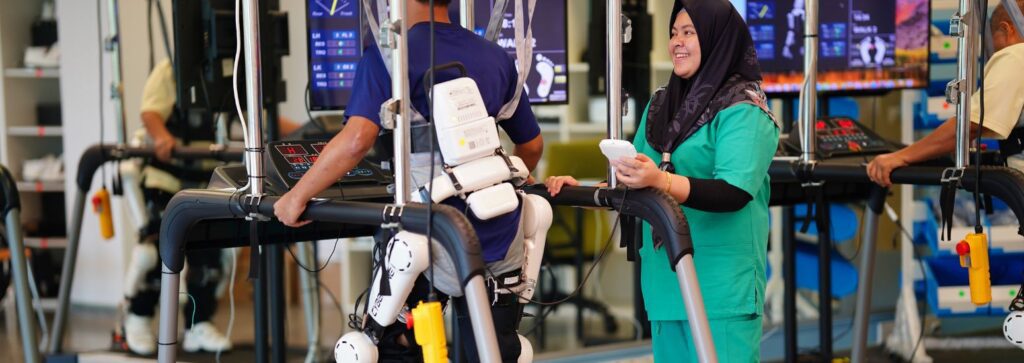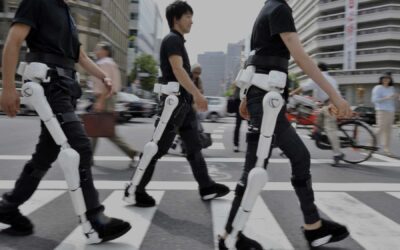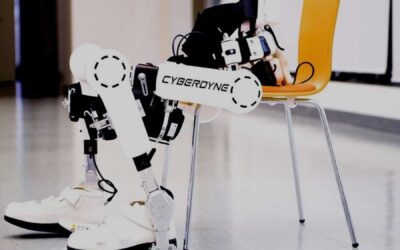The Hybrid Assistive Limb is a lower limb exoskeleton suit developed by Japan’s Tsukuba University and the robotics company Cyberdyne. It is designed to support and expand the physical capabilities of its users, particularly people with physical disabilities.
Wearing Cyberdyne’s Hybrid Assistive Limb, HAL leads to a fusion of “man”, “machine” and “information”, Our products’ innovative sensing and processing technology can pick up faint bioelectrical signals generated when a wearer attempts to move. HAL detects bioelectrical signals and provides the wearers with the appropriate power assistance to execute the desired movements.
Uses of the “Wearable Cyborg™ – HAL
Hybrid Assistive Limb (HAL) technology helps people who have lost the use of their lower limbs and restore the joy of walking. The Wearable Cyborg™ makes use of the patient’s intention to move the legs.
Cyberdyne Treatment

When a person moves, the brain sends a signal to the muscle to command the movement. At that time, a very faint signal that reflects the wearer’s intention to move appears on the skin’s surface. Using its sensors attached to the skin’s surface, HAL detects these so-called “bio-electrical signals” to perform the desired movements with the wearer’s voluntary commands.
HAL follows a certain pattern–
- Think-
When we move our bodies, we begin by thinking about the movement.
By thinking, “I want to walk,” the brain sends the necessary signals through the nerves to the muscles needed for that movement.
- Send
In the body of a healthy person, each muscle receives signals sent from the brain, allowing the muscles to move only the amount of force necessary to match the intention.
- Read
As the signals travel towards the muscles, they leak on the skin surface as very faint signals, so-called “bio-electric signals”. HAL can read the BES with its originally developed electrodes attached to the wearer‘s skin surface. Based on various other information obtained as well, HAL determines the wearer’s desired movements.
- Move
HAL controls the power unit according to the movements it recognises to assist the wearer in moving according to his or her intentions or even exerting more force than usual.
- Feedback
Once the movement is complete, the brain cheques how the body moves according to the signals sent. When HAL realises the wearer‘s intended motion, the body feeds back information about the successful movement.
Rehabilitation – Robot
Robot assisted therapy in stroke rehabilitation

Rehabilitation robots in physical therapy, help therapists ensure that exercises are performed accurately. The robots help to support the patient’s body weight so that patients can participate for longer periods of time. They measure improvements and provide objective reporting and assessment.
The “Wearable Cyborg™ assists a person with paralysis or weakness of the limbs as a result of the spinal cord or brain injuries such as stroke, traumatic brain injury, multiple sclerosis, or neurodegenerative diseases to move and enables him or her to exert bigger motor energy than usual.
HAL is also considered the system that accelerates motor learning of the brain, eventually leading to the neuroplasticity of brain functions.
Connect with Cyberdyne at https://rehabmodalities.com/ for a free demo today.



